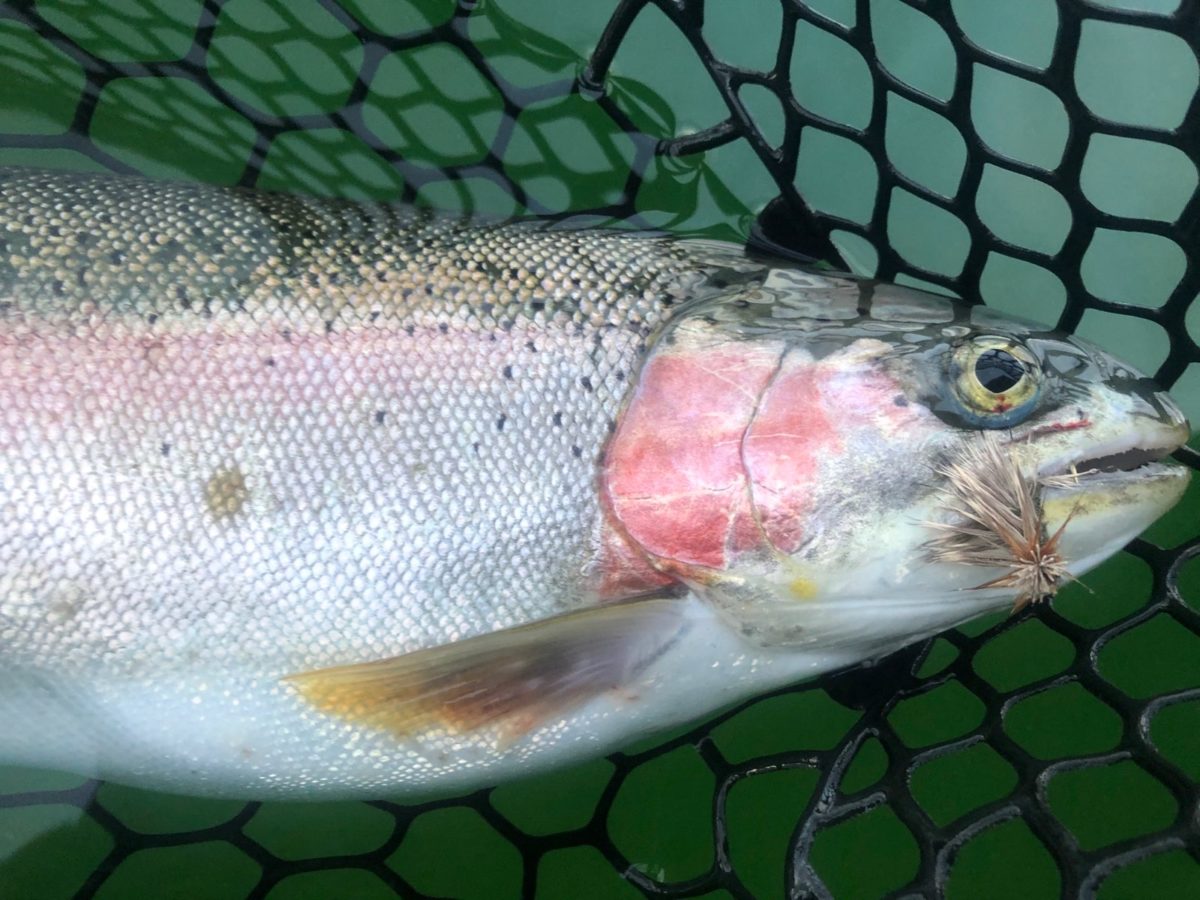OUTLOOK
Welcome to July and a happy belated Canada Day! The BIG NEWS this week is the Public Fishery Alliance’s announcement of an information rally to support a recovery plan for chinook stocks of concern and the mass marking of all chinook salmon! The PFA rally is on Monday July 6th from 12:00pm to 1:30pm outside of the DFO Offices in downtown Vancouver at 401 Burrard Street (corner of Burrard and W. Hastings). Click here for more information and we’ll see you there – with our masks on!
On the fishing side of things, a number of fisheries are now open. We have updates on the Skagit with water level pictures from opening day as well as the Vedder/Chilliwack outlook below.
We have a couple reports from Lake Country this week. Brian Chan tuned in with a great overview as well as a couple cool little tips to help you if you are heading out. Sterling has been putting in a bunch of time up in the interior as well. So, although we have been missing him on the sales floor we appreciate his reports and can’t wait for some of team’s upcoming days off to get up there and get out on the water.
Another fishery to start looking at is the North Shore beach coho fishery. It’s not an easy fishery but one that is very accessible. We have some tips on this fishery as well as a Capilano River update because these two fisheries are very closely related – read about all of this in the Capilano River update report this week.
On the saltwater front, we are happy to see a change in the weather for the weekend. Sunshine and a favourable marine forecast – it doesn’t get much better than that! We’ve also had reports of a mix of hatchery and wild coho this week. Check out Jason’s saltwater fishing report below for all of the details.
As always Click here for Matt’s Video Version of the Report:
CLASSES AND COURSES
July is here! Join Matt later this month in his Introduction to Fly Fishing Class. Stay tuned to this section’s class updates as we may have some more exciting classes coming later this month.
Introduction To Fly Fishing
This course was specifically designed to give the new fly fisher the basic knowledge, casting skills and fly fishing strategies to effectively fish our local BC waters. This course is comprised of two sessions; 3hr evening seminar and a 3hr casting session.
Dates: Zoom Seminar July 21. Casting July 25
Seminar Time: 6:30pm (Zoom)
Casting Time(s): 10am – 1pm or 1:30pm -4:30pm
Cost: $150.00+GST
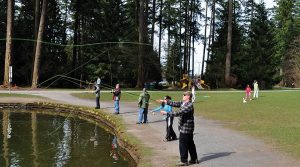
FRESHWATER FISHING REPORTS
Capilano River / North Shore Beach Report
With interesting weather, it is hard to predict how both the Capilano River fishery and the North Shore beach fishery will fare this season. These two fisheries are closely entwined.
If river levels hold and do not drop, we will see a good river season. If they close the dam and keep the river low, we will see the coho stack up at the mouth of the river as well as spend an extended period patrolling the North Shore.
Here are a couple of tips:
1. Watch the river levels. This is a good resource: http://www.metrovancouver.org/services/water/sources-supply/watersheds-reservoirs/seymour-capilano-river-levels/Pages/default.aspx
2. If the levels are high go river fishing; if they are low head to the beach.
3. If you are beach fishing, try to go on low tides so you can get farther out to the traveling lanes along the beaches. Check the tides on your favourite tide charts. Here are a couple of options: https://www.tide-forecast.com/locations/Vancouver-British-Columbia/tides/latest or http://www.dairiki.org/tides/monthly.php/van
4. Lower light days and times are key to get the coho closer to shore and the surface. This means overcast days or going early in the morning or late in the afternoon.
We have talked about the river presentations before so check back at past reports if you want tips on that. On the beach you will see anglers use fly rods or spinning rods primarily.
On the fly front use floating lines or shallow sink tips and the flies we use are commonly smaller than you would expect. 80% of the early coho’s diet is euphausiids, crab larva and very small baitfish. This is unlike the chinook or larger coho that come later, who feed more on anchovies and herring. With this in mind, small shrimp like attractor patterns are what most anglers will focus on.
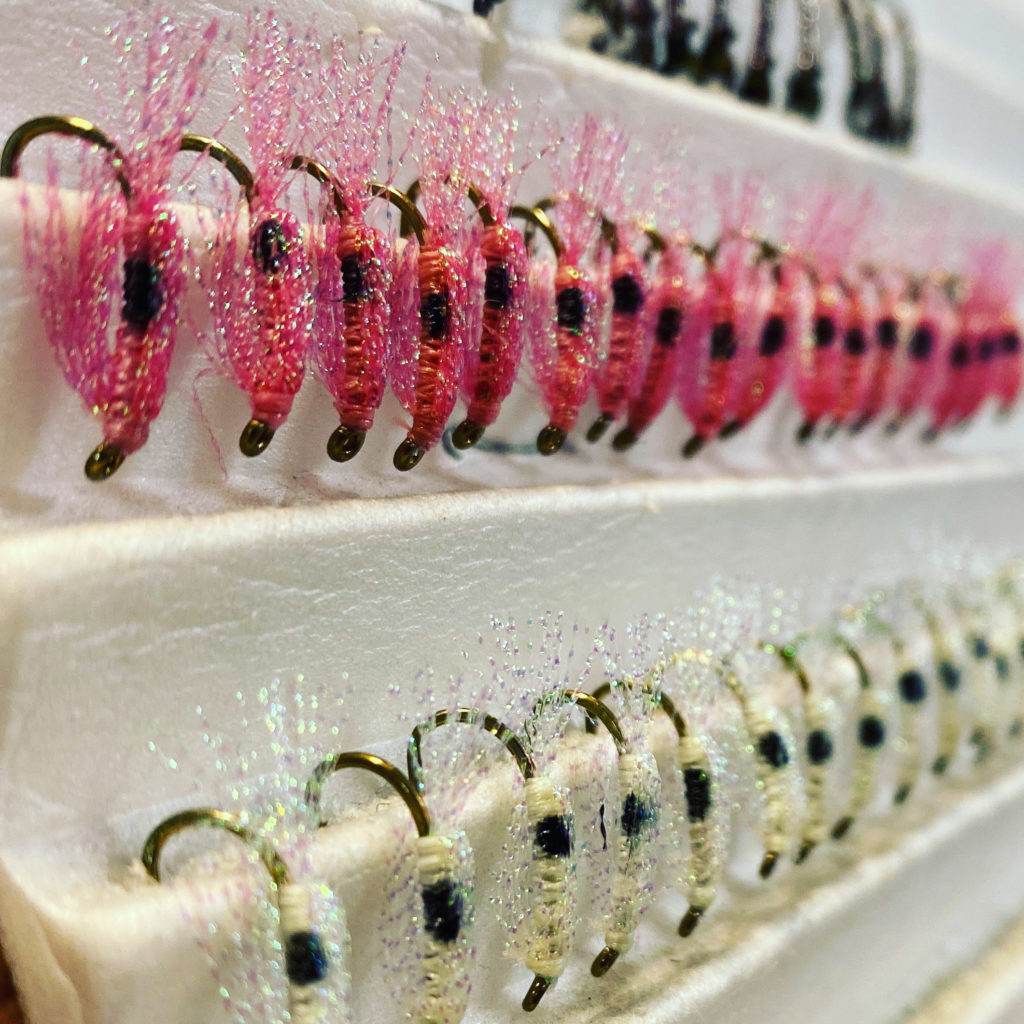
the north shore so come down and pick a few up or look to them for inspiration
Anglers with spinning rods will want to take advantage of being able to cast way farther than the fly anglers. We recommend medium buzz bombs or a small egg weight or chunk of pencil lead above a swivel with 18 inches of leader attached to a spinner. Blue foxes in orange, blue, green, chartreuse, copper or purple are great options. Lean toward the bright colors on overcast days and the greens, coppers and purples on the brighter days.
We have heard of a few fish taken off the beaches and it should only get better. Good Luck out there and keep sending in the reports and pictures!
Skagit River Update
Last week I looked at water levels and gave my predictions for opening day. Unfortunately, the prediction was right. The water is very high right now and shore access is a major challenge. Thanks to all those who sent in the pictures! We have some footage of the river in the video version of the report so check that out for a great look at what she is like right now.
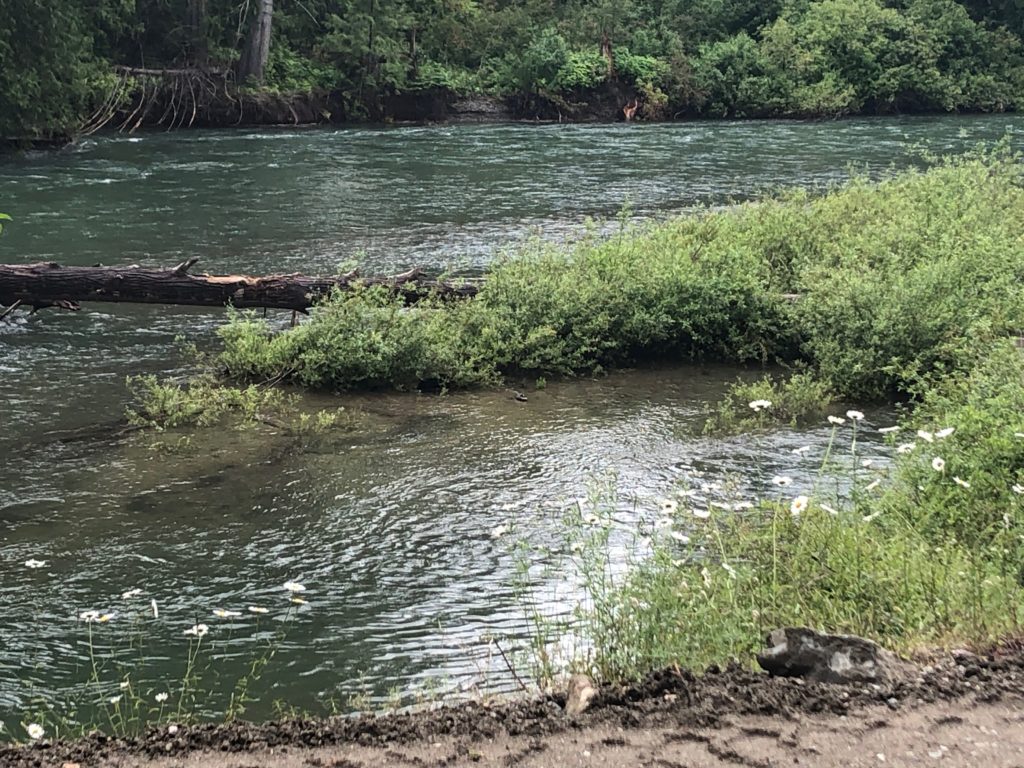
In the forecast, the weather should improve but with a cooler than normal spring and early summer, we will need some time for snowpack to get melted off. We will keep reporting on the river levels, but we expect it to be a couple weeks of warm weather before things come into shape. If you are going out and have a boat, we recommend coming at it from Ross Lake as it produced some good fishing this week and we expect this to continue.
Matt Sharp
Vedder River Outlook
Now that we are officially into July, one of the main river fisheries in the Lower Mainland has re-opened. Recreational angling on the Chilliwack River is back on as of July 1st and during the summer months receives a run of red chinook salmon and sockeye (which are strictly non-retention). This is a tough but rewarding fishery and is a great way to scratch the river fishing itch.
While red chinook will be in the river now, the peak of the run is typically between the fourth week of July and first week of August. The other determining factor, especially early in the season, will be water height. Early July is when the river is typically coming out of freshet mode but can still be high and dirty depending on the year’s snow pack and weather. Super-hot weather and a big snow pack can spell terrible river conditions, but so can a lot of rain. As of now, the river is quite high but it can be fishable if we get a few cooler days without much rain. We usually see very good conditions by the third week of July and this coincides with the peak window of the run.
Summer red chinook are big and mean so you will want to make sure you are ready for them. Heavier gear is a must as not only will you be contending with large fish but also lots of water current as well. Medium-heavy to heavy gear rods or 9-10 weight fly rods are adequate. Terminal tackle will need to be beefed up as well so don’t be afraid to fish 15-17 lb leader/tippet. Lots of weight and floats to match them for gear chuckers or heavy sink tips for fly chuckers are a must for getting your presentation down to these fish as well.
Speaking of presentations, there are a few go-to’s that many summer anglers resort to. Drift anglers can find success fishing pro-cured roe, shrimp, Colorado blades, jigs, and beads. In addition, swinging big spoons or twitching a twitching jig can also prove productive in the right circumstances. For fly anglers, any big intruder can get their attention and you will want to focus on chartreuse, orange, black, pink, and blue for colours. The most important aspect of your presentation, regardless of which method you choose, is to get it down to where the fish are. F ishing something different from the anglers around you can also prove effective. This can mean the difference between different cures for roe, size of a Colorado blade, or colour of the fly.
As I said, this fishery is tough but highly rewarding. Come into the shop to get geared up for it.
Alex Au-Yeung
STILLWATER FISHING REPORTS
Well, after what seems like an eternity of unstable weather and tough fishing conditions, the weather in the Merritt and Kamloops area finally seems to be setting up for some consistent nice weather. We have had a lot of customers coming into the shop telling us of their successes and of the challenging conditions. Hopefully, those successes can continue with some more stable weather. Sterling is bunkered down at his lake cabin in the interior and has a great update below. Aidan is headed out that way for a few days and will have some first-hand reports for next week. I am hoping to get out that way in a couple weeks as well so hopefully the conditions keep getting better!
The one nice thing about the cooler weather is that it seems to have extended the Chironomid season on the lower elevation lakes which has been pretty good at times. As we are starting to get into the more traditional hatches of damsels, caddis and sedges, make sure you come into the shop to get stocked up on these patterns. I reached out to Brian Chan to see what he was noticing and when the master speaks one had better listen. Brian’s report follows along with Sterling’s report from the Cariboo, where he has been getting some monsters on dries!
Zach Copland
Interior Lake Fishing Report
As we move into early July, we are finally seeing some decent damselfly emergence migrations and the long awaited caddis hatches. Both of these hatches are short but intense so make sure to have some damselfly nymphs and even a couple adult damselfly patterns as you never know when you will encounter adult feeding fish. The usual caddis pupae and adult patterns should also be in your fly box. The big travelling sedge pupae typically have a dark green to brownish green abdomen with often a bright green ribbing.
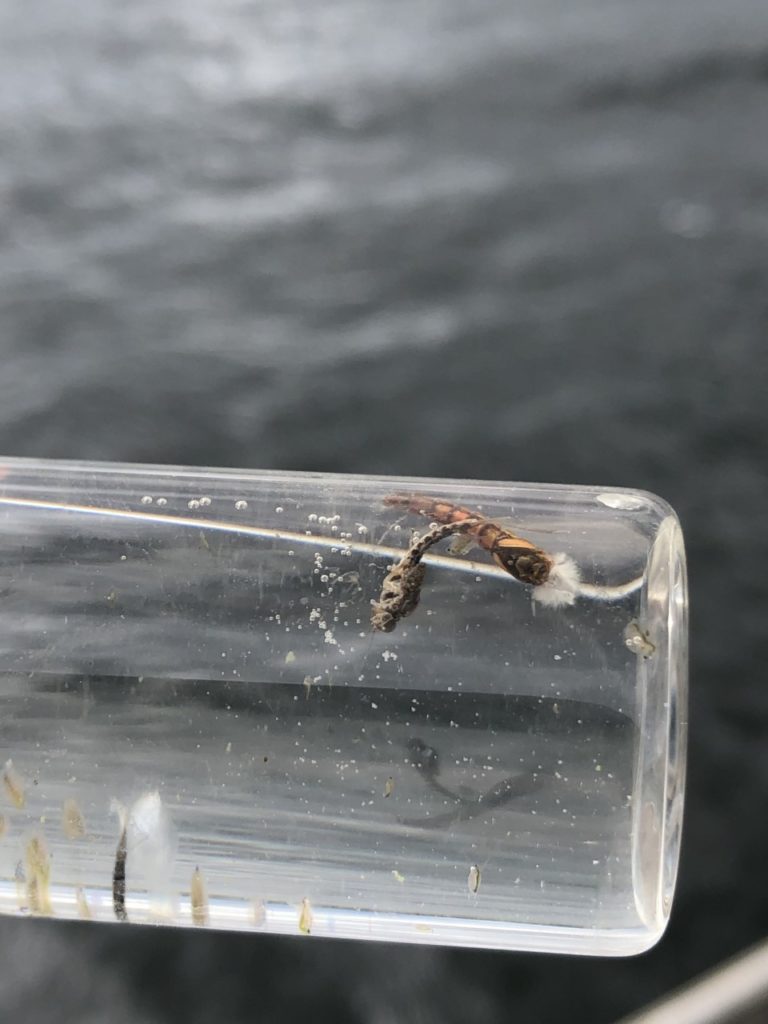
Numerous lakes are now seeing the first heavy blue green and green algal blooms of the summer. Despite having a colder and wetter June, there are some lakes that are now looking pretty green. Don’t let that deter you from fishing them as the algae is concentrated in the top 1 to 2 meters of the water column. During these blooms it’s best to fish chironomid patterns tied with white bead heads versus those tied using white antron for the gills. The algae will really discolour the antron.
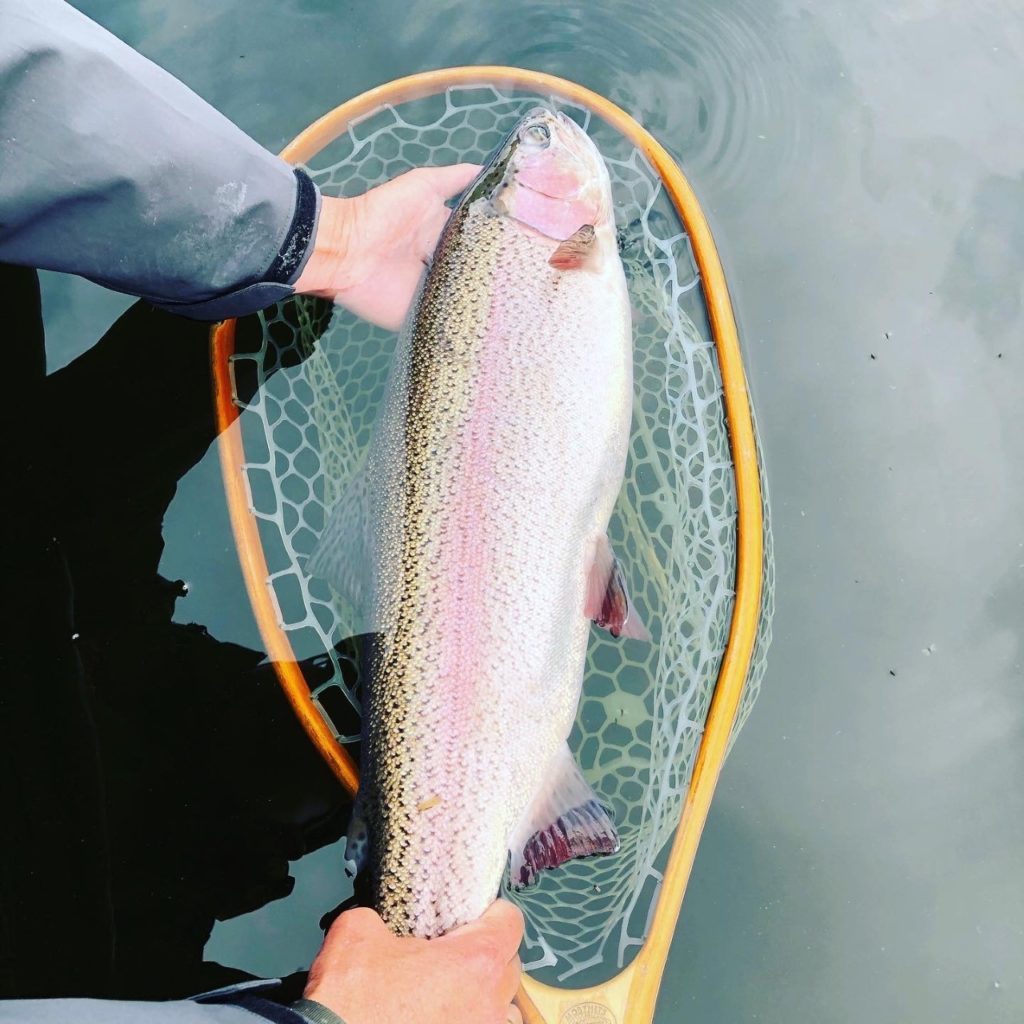
There are still some decent mayfly and chironomid hatches occurring on some of the bigger lakes including those that support both rainbows and kokanee. Kokanee are a great fish on the fly and offer an incredible fight as well as some of the best tasting fish that lakes have to offer. Kokanee love eating chironomids and mayflies and will even dine on damselfly nymphs.
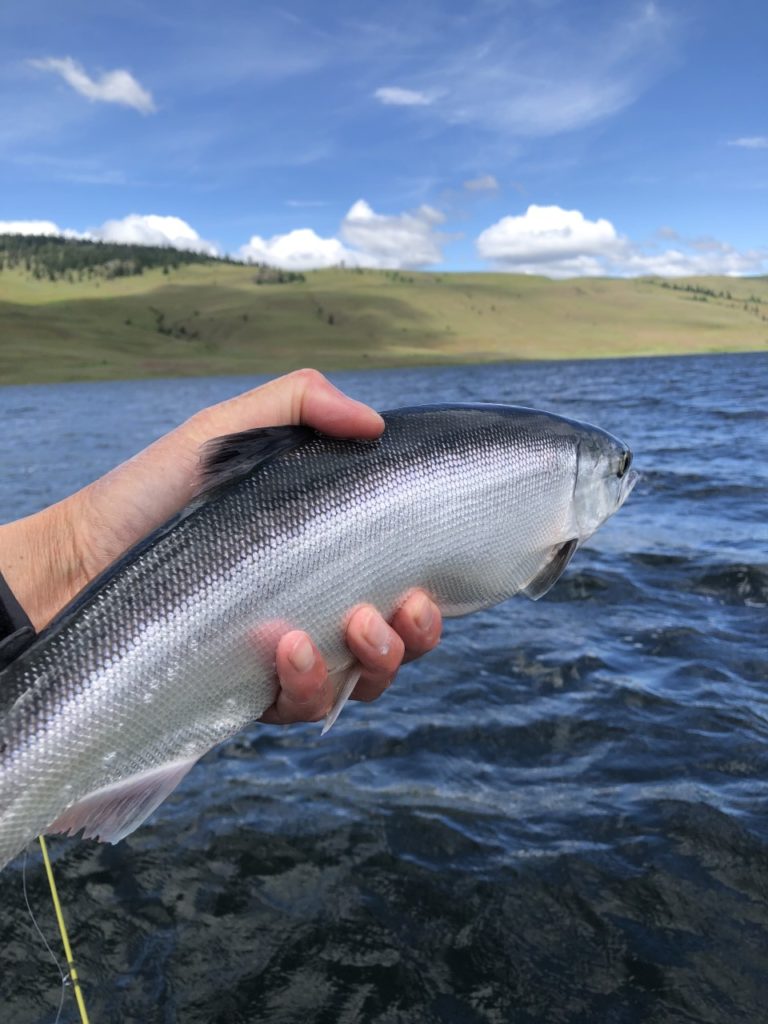
Brian Chan
Cariboo Lake Fishing Update:
This up and down weather in the Cariboo has made for some interesting fishing conditions. It’s that time of the year where each throat pump yields a different set of bugs. I’ve seen a throat full of chromies while the next fish is filled with light green damsels. These times can be tough on fisherman as they don’t even know where to start in their fly box.
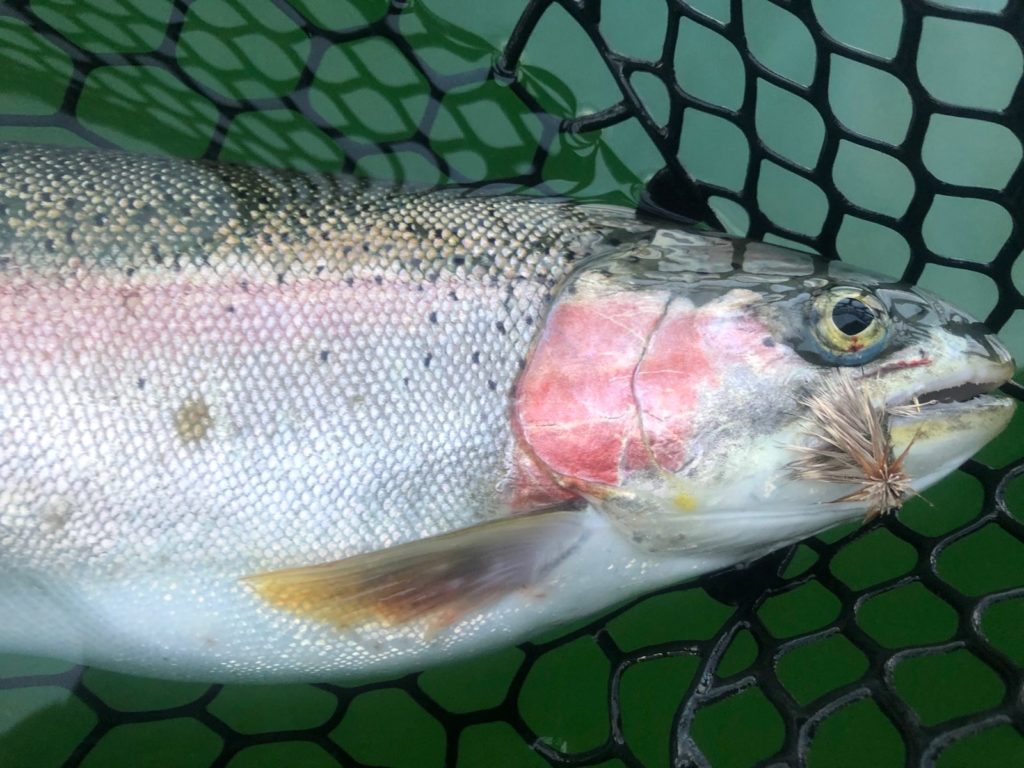
The cooler and stormy weather has pushed a lot of fish shallower into the 8-15 ft range. Leeches and caddis imitations have been the hot tickets this past week. For leeches, I’ve had the best success with size 10 black/purple/red combinations under an indicator. When conditions are calmer, caddis pupae and hot spot pheasant tail imitations have been deadly throughout the late afternoon. These cooler periods also provide amazing top water conditions when the water is dead calm as certain lakes are home to large travelling sedge hatches. I’m in the camp of bigger is always better when it comes to these travelling sedges and will cast large mikulak patterns to get the job done.
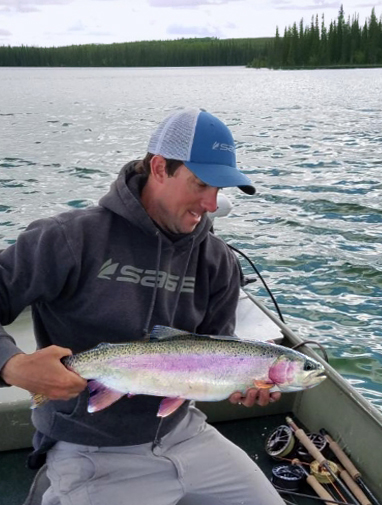
As always, deep chronies always work too if it’s an unusually warm day. Bomber hatches in the Cariboo have been pretty hit or miss depending on the lake.
Sterling Balzer
SALTWATER FISHING REPORTS
Well, finally the weekend anglers have some luck on their side! The winds look pretty ideal this weekend and this soggy Friday is going to be replaced by some sun.
We are also happy to report there have been some coho around; a mix of wild and hatchery. As some of you may already know, the Capilano River Hatchery gets back around 12,000 coho every year. These fish generally stage off South Bowen and then swing into Vancouver Harbour along West Van and then eventually head up the river. This past week there have been fish caught off South Bowen from Cowan to Roger Curtis and there have been some fish caught off Point Atkinson in towards Pilot Cove, also known as “Fisheries” because of the fisheries research station in that area.
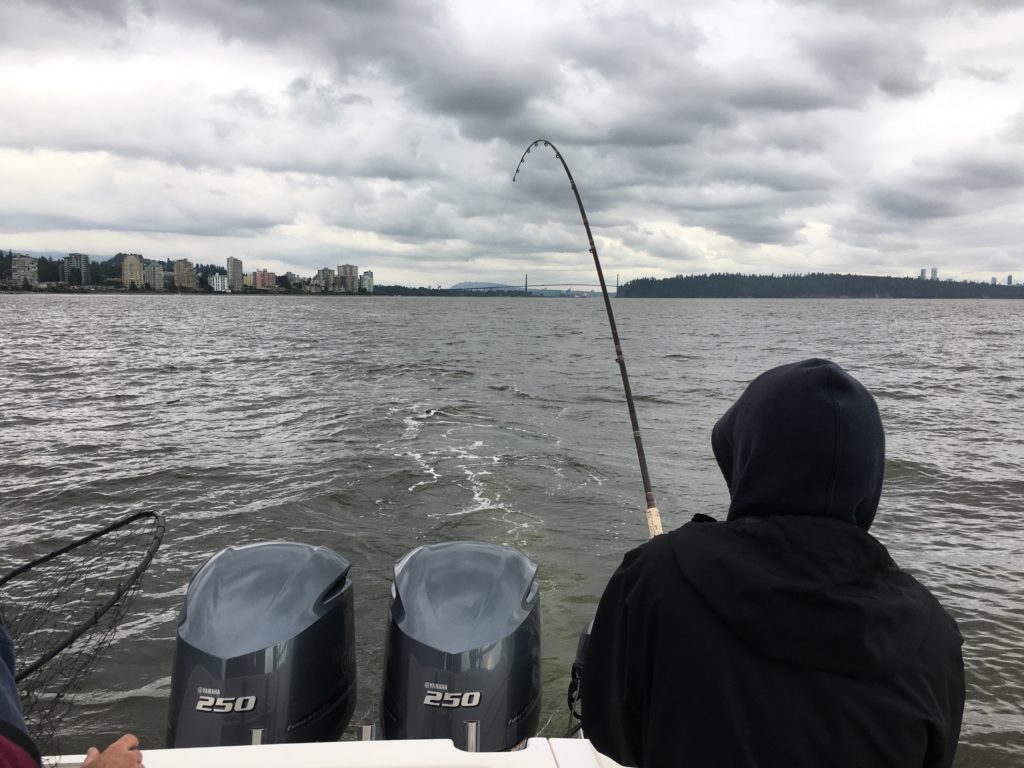
When we are fishing for coho, we usually have the gear pretty shallow, around 25-75 on the riggers. UV and chrome flashers like Purple Haze, Green Haze, Green Onion, Purple Onion, and Betsy or Chrome Herring Aid are all excellent choices. They seem to like a white UV hootchy on a shorter leader, around 28 inches, but will also hit spoons and bait. The limit is 2 per day, min size 30 cm, no max size, but they must be hatchery with no adipose fin, and all wild coho should be released at the side of the boat.
Speaking of catch and release, if you hook up with a chinook while fishing for coho, we recommend releasing the fish at the side of the boat. With the no fishing for chinook regulation in place in our local waters, it is not a good idea to net the fish, bring it in the boat, and take a picture. The best practice is to simply release the fish at the side of the boat. A video is a great way to capture the action of a chinook battle and doesn’t require the fish to be netted and handled for a picture. Note that if you decide to cross this weekend and fish the Gulf Islands, Nanaimo, or further up the Island, the regulation is non retention of chinook, so you can target chinook and practice catch and release. This area opens for retention on July 15th, one a day, 62 cm min, 80 cm max, wild or hatchery.
As our regular readers know, we don’t agree with the current chinook regulations for the Vancouver area. If you haven’t read my blog post about it, please do so and make sure to write a letter as they are having impact. 2020 Chinook Measures: Our Response.
I received an incredible amount of emails, texts, and messages on Instagram and Facebook in support of this letter and all of you are frustrated and want to help. The first thing you can do is write a letter. The second thing you can do is come to the PFA Rally on Monday. Many of you have offered to help above and beyond these two steps and I will be getting back to each of you as soon as possible.
Here is some information on the PFA Rally. The PFA has people who are designated speakers/presenters and well thought out messages, so you just need to show up and support!
See you at the rally on Monday,
Jason Tonelli


